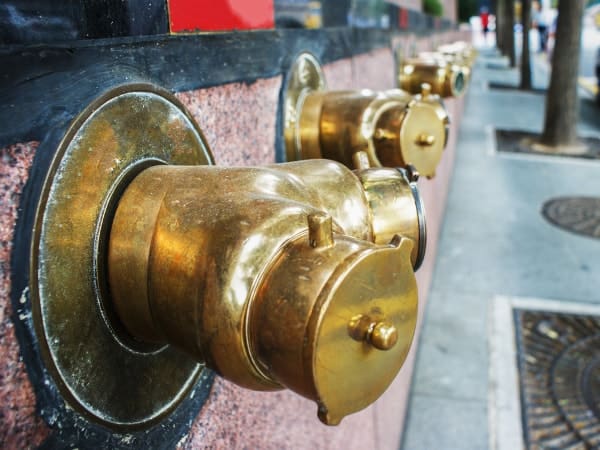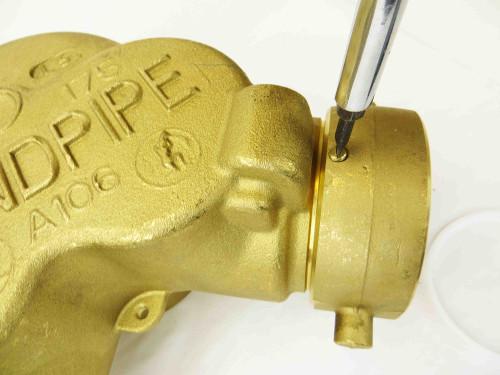Failure to replace an inexpensive FDC component risks people and property
Standpipe systems make large and tall buildings safer by allowing firefighters to connect fire hoses to a water supply at convenient access points throughout a building. But it’s fire department connections (FDCs) — metal fixtures located on a building’s exterior — that first responders often use to pump water into standpipes (and sprinkler systems).
Without that water supply, manual standpipe systems are little more than empty pipes. And even other automatic standpipe systems or fire sprinkler systems may need supplemental water.
Unfortunately, theft, vandalism, and neglect leave many fire department connection swivels — a key component — temporarily inoperable. And while it can cost hundreds or even thousands of dollars to install a new fire department connection, many broken swivels can be fixed quickly and at little expense.
Check out this guide to replacing a fire department connection swivel:
The life-and-death need for working fire department connection swivels
Swivels secure hoses to a building’s fire department connection. They’re designed to rotate quickly and with little effort and go nearly unnoticed during a firefighting incident.
Before moving on: if you’re just looking for an inexpensive 2 1/2″ replacement swivel, QRFS has you covered!
FDCs with damaged or missing swivels are a different story, however. In a piece published at FireRescue1, inventor and retired fire captain Mike Cornelius recalled the incidents that led him to develop a tool for firefighters faced with a missing swivel, including an instance where his crew had to run 15 stories worth of hose to fight a rooftop fire. Cornelius realized that the frequency of stolen swivels — “as many as six missing swivels from a single building” — meant that the problem wasn’t going away.
“[The thief] has stolen the water supply,” Cornelius said. “He has stolen a piece of the standpipe system. It would be like forgetting to bring a nozzle or a hydrant wrench to a fire.”
Manufacturers and fire departments are rising to the challenge caused by missing swivels. Some fire departments now carry hose adapters — used when swivels won’t turn — or Cornelius’s quick-connecting replacement swivels. Cities around the country have also taken steps against FDC swivel theft by mandating the use of plugs with anti-theft features.
Westminster, Colorado firefighters provide a demonstration of fire department connections:
Still, theft isn’t the only threat to FDC swivels. In an article for Fire Engineering Magazine, Todd Connors of Clearwater Fire Rescue provides a photographic look (registration required) at problems facing fire department connections. It doesn’t matter whether swivels are stolen, missing, covered in concrete, or rusting outdoors; any problem can significantly delay firefighting efforts and force firefighters to make use of exhausting workarounds.
Standpipe systems that fail to deliver water can have serious consequences for first responders and the high-rise structures where many blazes are battled. In May 2017, The New Zealand Herald reported that a malfunctioning standpipe system in Auckland turned a skyscraper fire that should’ve lasted only seconds into a 40-minute effort — one that required firefighters to run the hose up 27 stories.
Even worse was the tragic series of events at the Deutsche Bank building in New York City, where a 2007 fire on the 15th floor — prolonged by a disabled standpipe system — killed two firefighters and injured more than 100. Many planning and safety failures by contractors and fire officials placed those on the scene in the impossible situation of fighting a fire with empty hoses.
But incidents like these illustrate why replacing a fire department connection swivel — and having otherwise working FDCs — can be crucial
A basic overview of fire department connections
First responders’ firefighting efforts start with a functioning water supply, delivered through either an onsite pump or a fire department connection. Each fire department connection has at least one swivel, which creates a watertight path for water to travel from a fire engine or pump to the building’s standpipe or sprinkler system. Each fire department connection swivel has a size and threads of a particular make and diameter meeting the standards of the local fire code.
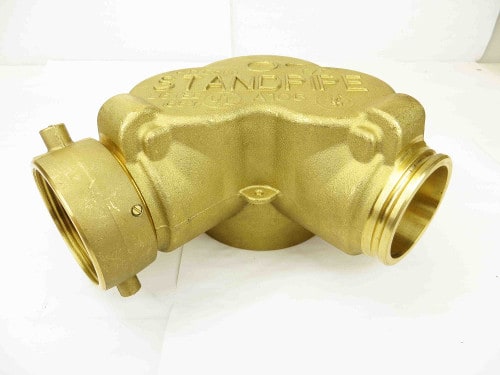
The fire department connection swivel rotates smoothly, allowing firefighters to quickly secure their hose to the FDC. This smooth movement is achieved with ball bearings, which reduce friction between the swivel and the body of the fire department connection. These ball bearings rest between two grooves — one on the body of the FDC, and the other on the swivel.
Learn more about the role and components of fire department connections.
How to install a replacement FDC swivel
Broken or missing swivels can be replaced with a replacement swivel kit containing four parts: the swivel, ball bearings, a gasket, and a set screw.
If an old swivel needs to be removed, rotate it and look for the head of a set-screw near the edge of the swivel where it meets the FDC’s body. Remove the set screw. The swivel should now slide off of the FDC’s body.
A groove should be exposed on the FDC where the body and the swivel meet. Ensure that the groove is smooth, even, and undamaged by rust.
Locate the threads inside the swivel. Insert the new gasket into the new swivel through the un-threaded end. Seat the gasket against the threads — not in the holed groove reserved for the ball bearings.
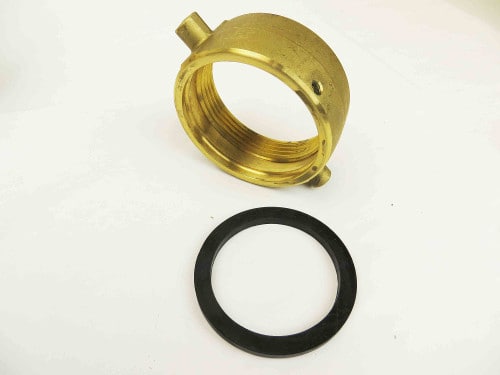
Place the swivel on the FDC body with the hole facing up. Align the groove on the swivel with the groove on the FDC body. Insert each ball bearing, one at a time:
Insert and tighten the set screw:
The swivel should now spin with a smooth, easy motion. If the cap or plug covering the FDC swivel is missing or damaged, you’ll need to replace it, too. While they’re not included with a swivel replacement kit, caps and plugs are relatively inexpensive (as low as four dollars for a plastic breakaway cap). Caps or plugs may be available in plastic, aluminum, and brass, and also vary according to the size and threading of your fire department connection.
Check out our guide to replacing a fire department connection cap or plug.
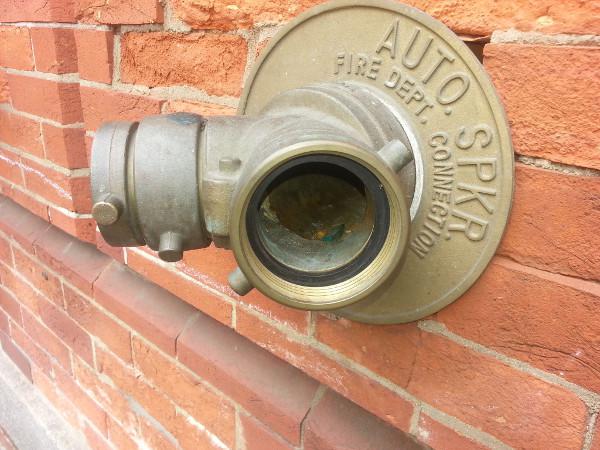
Swivels can be replaced for at or less than $20, and it’s usually what you need for an existing FDC. Swivels and snoots — the latter a female thread adapter for certain FDCs — can run $40 or $50. There are two scenarios where you might need a replacement snoot as well as a swivel: you have a flush FDC and a nipple, but no snoot (somehow, you received an incomplete FDC) or —and more likely — someone stole the whole snoot! But if the snoot is present and undamaged, buying one along with a replacement swivel is overkill.
All of these replacement parts cost far less than replacing an entire FDC. The size and threading of your swivel will depend on what’s required by the local fire code. If you still have an existing swivel, you can measure its inside diameter, as pictured below, to determine the size.
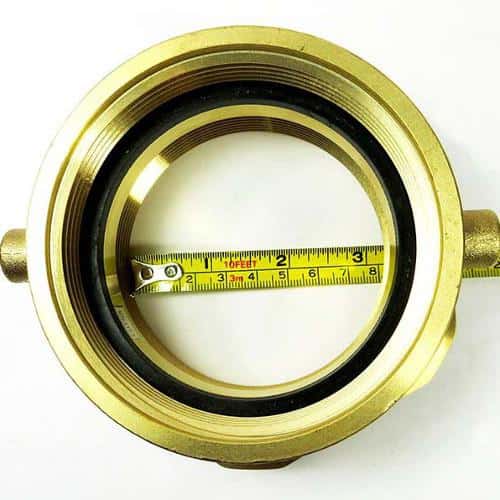
While your threads are likely one of a few standard types, getting the exact measurements required to identify threading can be extremely difficult — particularly if your swivel is missing. It’s a good idea to reach out to your local fire department to ensure that you’ve got the right threads and size before replacing a fire department connection swivel.
To view QRFS’ in-stock replacement swivels, click here. If you’d like to order a replacement swivel kit by phone, call us at 888.361.6662.
This blog was originally posted at blog.qrfs.com. If this article helped you get a better understanding of FDC swivels, check us out at Facebook.com/QuickResponseFireSupply or on Twitter @QuickResponseFS.


